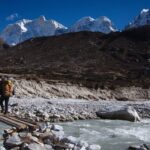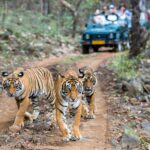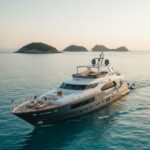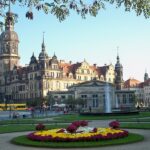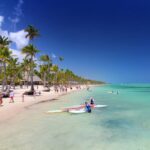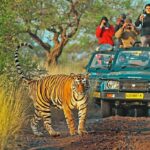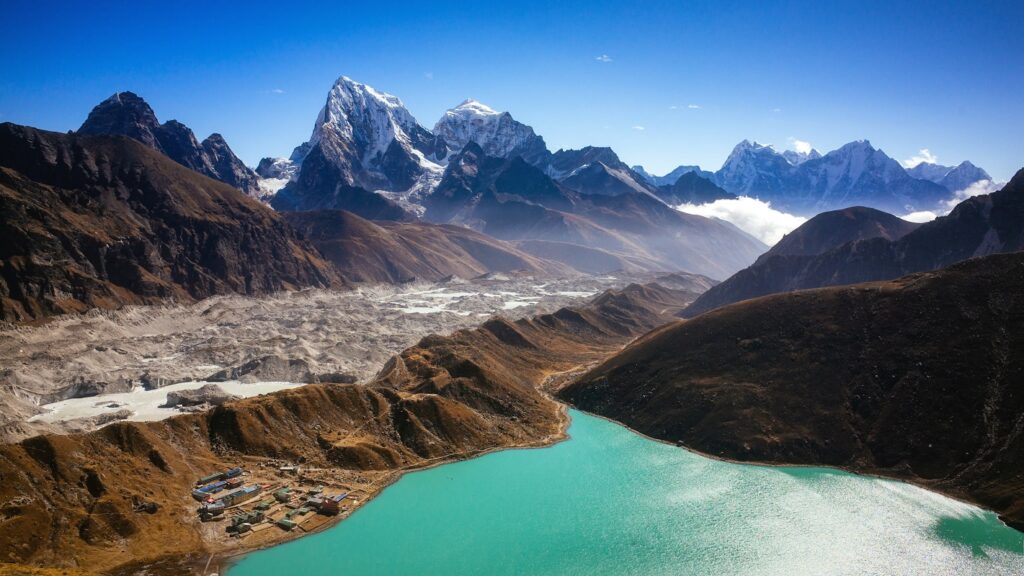
Gokyo Lakes Trek: A Journey Through the Heart of the Himalayas
The Gokyo Lakes Trek is an exhilarating journey that takes you through the heart of Nepal’s majestic Himalayas, offering a blend of adventure, serenity, and cultural immersion. Unlike the more frequented Everest Base Camp trek, the Gokyo Lakes route offers a unique perspective of the Everest region, combining stunning natural beauty with the allure of one of the world’s highest freshwater lake systems.
Discovering the Serenity of Gokyo Lakes
As we embark on this trek, the path leads us through quaint Sherpa villages, dense forests, and along rushing rivers, culminating in the serene Gokyo Lakes. These sacred waters, set against the backdrop of towering peaks, offer a sense of tranquility that is hard to find elsewhere.
A Trek That Touches the Soul
The true essence of the Gokyo Lakes Trek lies in its ability to touch the soul. As we traverse this path, the sheer beauty of the Himalayas, combined with the cultural richness of the Sherpa people, creates an experience that goes beyond mere trekking. It’s an adventure that stays with you long after you’ve left the mountains.
The Path Less Traveled: Serenity Along the Gokyo Trek
One of the most appealing aspects of the Gokyo Lakes Trek is the relative solitude it offers compared to more popular routes in the Everest region. This less-traveled path allows trekkers to immerse themselves fully in the natural splendor of the Himalayas. The tranquility of walking through rhododendron forests, crossing suspension bridges over gushing rivers, and the occasional encounter with wildlife such as the Himalayan Thar, makes this trek a serene experience.
Elevated Experiences: The Gokyo Ri Vantage Point
A highlight of the trek is the ascent to Gokyo Ri, a peak that offers one of the most awe-inspiring views of the Everest range. Standing at an elevation of 5,357 meters, trekkers are rewarded with a 360-degree panorama of snow-capped peaks, including four of the world’s highest mountains – Everest, Lhotse, Makalu, and Cho Oyu. The sight of the first light of dawn breaking over these giants is a moment that etches itself into memory forever.
The Sacred Lakes: A Blend of Nature and Spirituality
The Gokyo Lakes, the world’s highest freshwater lake system, are not only a natural wonder but also hold great spiritual significance. These six lakes are considered sacred by both Hindus and Buddhists, and a visit to these turquoise waters is often seen as a pilgrimage. The largest of these, Thonak Tsho, is particularly mesmerizing with its crystal-clear waters reflecting the surrounding snow-clad peaks.
Cultural Richness: The Heartbeat of the Himalayas
Throughout the Gokyo Lakes Trek, trekkers get to experience the rich culture of the Sherpa community. From the vibrant prayer flags and intricately carved mani stones to the hospitality in local teahouses, the cultural aspects of this trek are as compelling as its natural beauty. Visits to monasteries and interaction with the local people provide a deep insight into their resilient and spiritual way of life.
Flora and Fauna: A Himalayan Oasis
The trek is not just about mountains and lakes; it’s also a journey through diverse ecosystems. From dense forests in the lower regions to alpine meadows higher up, the trek is a botanist’s dream. The region is home to a variety of wildlife, including rare species like the snow leopard and the red panda, making it an exhilarating experience for nature enthusiasts.
Reflecting on the Journey: More Than Just a Trek
As the journey concludes, trekkers find that the Gokyo Lakes Trek is more than just a physical challenge; it’s a journey of self-discovery and reflection. The combination of natural beauty, cultural richness, and personal accomplishment makes this trek a life-changing experience. It’s not just about reaching a destination; it’s about the insights gained, the bonds formed, and the memories created along the way.
Key Takeaways of the Gokyo Lakes Trek Experience
- Unmatched Scenic Beauty: From lush valleys to glacial lakes, every step of the Gokyo Lakes Trek is a feast for the eyes.
- Rich Sherpa Culture: Engage with the warm and welcoming Sherpa community, gaining insight into their unique way of life.
- Thrilling High-Altitude Challenges: Ascend Gokyo Ri for breathtaking panoramic views of Everest, Lhotse, and other Himalayan giants.
- Flora and Fauna: The trek is a haven for nature lovers, showcasing diverse ecosystems and wildlife.
- Tranquil Lakes: The pristine Gokyo Lakes offer a peaceful retreat from the hustle of daily life.
- Spiritual Rejuvenation: The trek is not just a physical journey but a spiritual one, offering moments of introspection and peace.
- Unique Itinerary: The Gokyo Lakes Trek stands out with its less crowded paths and distinct route, ensuring a unique trekking experience.
In summary, the Gokyo Lakes Trek is a mesmerizing blend of natural splendor, cultural richness, and personal achievement. It’s a trek that offers something for everyone – be it adventure, peace, or a deeper understanding of the Himalayan way of life.
The Gokyo Lakes Trek is more than just a journey through the Himalayas; it’s an exploration of nature’s wonders and an immersion into a vibrant culture. This trek is not just a path but a journey of discovery, challenging the body and enriching the spirit.
What is the best time of year to do the Gokyo Lakes Trek?
The ideal times to embark on the Gokyo Lakes Trek are during the spring (March to May) and autumn (September to November) seasons. These periods offer stable weather conditions and clear skies, providing trekkers with the best views of the Himalayan peaks. The temperatures are also more comfortable for trekking during these months. Spring adds the bonus of blooming rhododendrons along the trails, while autumn brings festive moods in local communities.
How difficult is the Gokyo Lakes Trek?
The Gokyo Lakes Trek is considered a moderate to challenging trek, primarily due to its high altitude and rugged terrain. Trekkers should be in good physical condition and have some experience in long-distance hiking. The trek involves walking for several hours each day, often on steep and uneven paths. Acclimatization days are essential to adapt to the high altitude and reduce the risk of altitude sickness. While challenging, the trek is achievable for those with determination and a decent level of fitness.
What are the accommodation options during the Gokyo Lakes Trek?
Accommodation on the Gokyo Lakes Trek primarily consists of teahouses and lodges run by local Sherpa families. These teahouses offer basic but comfortable rooms, usually with two beds and shared bathroom facilities. Some may have options for hot showers and charging electronic devices for an additional fee. The teahouses also serve as dining halls, providing trekkers with nutritious, locally-prepared meals, crucial for the energy needed for trekking.
Do I need a guide for the Gokyo Lakes Trek?
While it’s possible to trek independently, hiring a guide for the Gokyo Lakes Trek is highly recommended, especially for those unfamiliar with high-altitude trekking or the region. A guide ensures safety, helps with navigation, and provides valuable insights into the local culture and environment. They also assist in managing accommodation and meals along the trek. Additionally, employing a local guide supports the local economy.
What should I pack for the Gokyo Lakes Trek?
Essential items for the Gokyo Lakes Trek include sturdy trekking boots, thermal layers, a warm jacket, gloves, a hat, and a waterproof outer layer. You should also pack a sleeping bag, a comfortable backpack, a first-aid kit, water purification tablets, and personal medications. Don’t forget sunglasses and sunscreen to protect against intense sun exposure at high altitudes. Lastly, packing light and bringing only essentials is key, as you’ll be carrying your pack each day of the trek.
